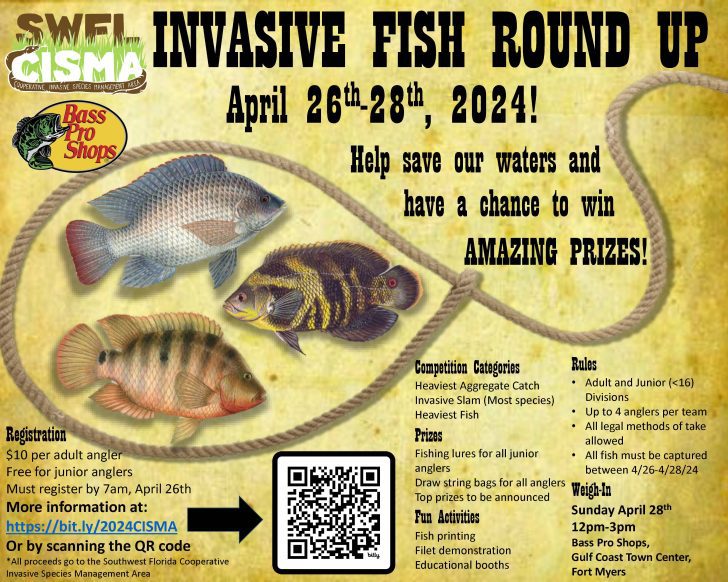By: Mike Sipos
Lionfish, tiger prawns, zebra mussels oh my! What does each one of these aquatic critters have in common? They are all nonnative species that have been spotted in the United States and when introduced ecosystems outside of their native range, can negatively impact humans, the environment or the economy giving them the notorious label of “invasive.” We all know an example of an invasive species but what exactly are these organisms that contribute over $120 billion annually in damage to the United States economy? Invasive species are nonnative by definition and occur outside its geographic range, these organisms were introduced by people either intentionally or unintentionally and do/can cause harm to the environment, economy, or humans. If the organism is not from here and is not causing harm, you got yourself a nonnative, which when kept under the right conditions can be our harmless pets, favorite food and prized landscaping!
When do nonnative species become a REAL problem? When these organisms become established in our environment meaning a self-reproducing population and once that happens, they are often here to stay and so are the issues they create for land managers, local ecosystems and costs associated with research and removal. So, what’s the answer? Education, prevention, early detection rapid response and removal! An ounce of prevention is worth a pound of cure, the most effective way to battle invaders from taking hold is to not release them out to begin with. Some of these introductions may have been by accident through unprocessed shipping materials, adverse weather, escapees etc. which may be hard to foresee but legislation, research and municipal ordinances can help reduce the chances of unintentional introductions. Education on the impacts of invasive species can help prevent folks from considering releasing their pets or choosing plant species that are legal and have less of a chance of getting out of hand and out of the yard. Programs like Florida Fish and Wildlife Commission’s Exotic Pet Amnesty Day events take unwanted pets and find homes for them while of the plant side, checking out local ordinances and Florida Friendly Landscaping recommendations could help reduce our ecological footprint. Letting researchers know sightings of new invasive species using tools like IveGot1 app can get managers to an area and prevent that nonnative species from becoming established.
Next up removal efforts! Folks can get involved in roundups and wrangles, tackling anything from the marine lionfish, freshwater fish species, trees or weeds! Working groups like CISMAS (cooperative invasive species management areas) put on events like the 2024 SWFL CISMA Invasive Fish Roundup where the public can help take a bite of the freshwater fish problem in our area. During the 2023 event 91 anglers brought in over 5,639 invasive freshwater fish weighing it at a whopping 2,648 pounds! During the event data was collected to benefit research and fish were used for educational purposes, consumed by the anglers and anything unclaimed was used in compost. This year’s event which will take place from April 26th-28th is gearing up to be the best yet! Participating anglers can receive prizes and during the weigh-in on April 28th there will be plenty of fun educational stations and activities. Spread invasive species awareness today and for more information about the invasive freshwater fish roundup check out bit.ly/2024CISMA.
Michael Sipos is the Florida Sea Grant agent for UF/IFAS Extension Collier County. Contact him at sipos624@ufl.edu. For more fishy content and updates on upcoming educational programs, please check out linktr.ee/CollierSeaGrant for links to the Collier County Sea Grant Facebook page, YouTube Channel, Instagram listing, UF/IFAS blog and more!

